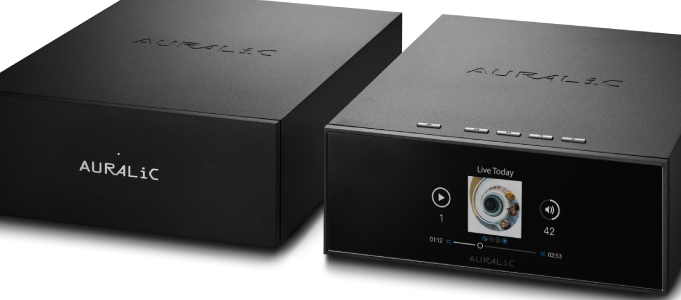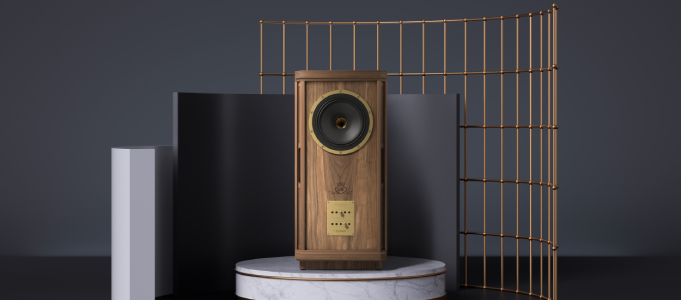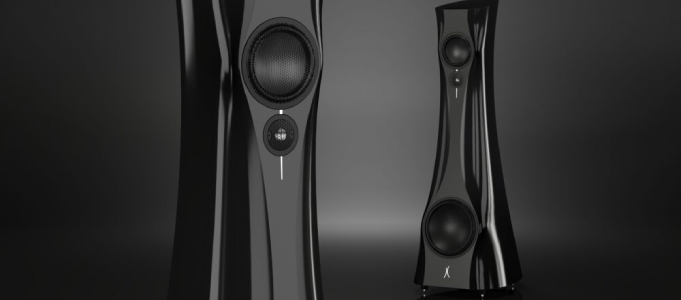Samsung 65-inch Q800T 8K QLED Smart TV Review

John Archer tries out this great value for money, super high resolution TV…
Samsung
Q800T 65-inch QLED 8K TV
AUD $4,795 RRP

With the arrival of Samsung’s new QE65Q800T, the debate over whether anyone really needs an 8K TV right now – when 8K sources are all but nonexistent – just got more interesting. The thing is, despite squeezing 8K’s requisite 7,680x4,320 pixels into its 65-inch frame, the 65Q800T costs just $4,795. That’s still a chunk of change, of course, but a much smaller one than we’ve ever seen attached to a Samsung 8K TV before. In fact, it makes the 65Q800T cheaper than Samsung’s 2019 flagship 4K TV.
It’s pretty clear then that this is Samsung’s first really serious attempt to suggest that discerning TV buyers can now put 8K into their prospective TV mix alongside premium 4K TVs. Given that Samsung also offers much more expensive 8K models in its 2020 range though, the question for the 65Q800T has to be where have the compromises been made for it to offer so many pixels for so little money?
FEATURES
As you’d expect of a TV from the upper tiers of Samsung’s 2020 range, the 65Q800T combines the brand’s QLED technology with a FALD (full array with local dimming) backlighting system. The former uses metal-encased Quantum Dots to deliver expanded colour volumes, and high brightness levels without any of the potential ‘screen burn’ worries associated with OLED TVs. The FALD backlighting, meanwhile, uses 224 individually controllable zones of lights positioned directly behind the screen. This is less than half the number of dimming zones you get in the company’s flagship Q950TS 8K TVs for this year – and actually only half the number you got in Samsung’s excellent 2019 4K flagship sets, the Q90Rs. Plus, with OLED TVs, each and every pixel is able to deliver its own light independently of its neighbours. This said, 224 has more dimming zones than the vast majority of other LCD TVs provide.
Samsung has increased the potential for the 65Q800T’s backlight to continue challenging OLED technology for dark scene prowess too, by combining the local dimming with a new power management system that redistributes power from dark areas where it’s not needed to bright areas where it is. This new TV gets Samsung’s latest Quantum 8K processor, complete with AI-inspired upscaling of sub-8K sources. The quality of this upscaling will be particularly crucial of course, given how little native 8K content it’s likely to be receiving any time soon.
As you’d hope of an 8K TV, the 65Q800T’s four HDMI connections include one that’s capable of receiving 8K video at up to 60 frames a second. Or perhaps more pertinently for current and imminent sources (in particular the PS5 and Xbox Series X consoles), it can also receive 4K at up to 120 frames a second. High-end gamers will be pleased to hear that the set supports both Freesync and HDMI 2.1 variable refresh rate technologies. The 65Q800T can play 8K from USB drives, streaming services or external devices (which are currently limited to high-end PCs). It’s a relief given the situation with some rival 8K TVs to find that 8K playback is not limited to just the HDMI port.
The 65Q800T manages to look pretty cutting edge despite its use of a FALD lighting system making it stick out more round the back than most of today’s super-slim TVs. The fact that its back is as flat as its front creates an eye-catching monolithic profile, while the frame around the screen is so narrow that you barely notice it. The only pity is that unlike previous generations of premium Samsung TV, the Q800T range doesn’t ship with an external connections box, so you need to plumb all your sources straight into it, with all the potential cable spaghetti that entails, rather than just having a single cable running between the old external ‘One Connect’ box and the screen.

KEY SPECS
This new TV plays a pretty good numbers game, managing a peak brightness measurement of almost 1,700 nits in its most punchy Dynamic mode (measured on a white HDR window covering 10% of the screen area). Although this drops to around 1,400 nits in the more accurate Movie mode, its brightness is still an impressive effort that has the potential to get serious impact from high dynamic range sources. To put this into context, the vast majority of OLED TVs struggle to get brighter than 800-900 nits with the same 10% HDR window test screen. Though of course, since OLED TVs can put their darkest and brightest pixels side by side without either polluting or compromising the other, they can compensate for their relatively low brightness by delivering more local contrast.
The 65Q800T’s colour performance out-of-the-box varies considerably between presets. Most presets don’t actually track very closely to established SDR and HDR values, as Samsung instead chooses to push a more aggressive image arguably better suited to its panel’s core capabilities. I actually don’t mind this, though – at least when there’s also an easy to access ‘accurate’ picture preset option on offer too, in the shape of the set’s Filmmaker Mode. This has been explicitly designed to the satisfaction of the independent UHD Alliance group to deliver a picture closely matched to the sort of image values used in mastering studios.
Gamers will be delighted to hear that when set to its Game picture mode, the 65Q800T takes barely 10ms to render its pictures. This is an incredibly low figure when you think how many pixels the set’s processing is having to conjure up on the fly when turning current gaming sources from 4K (or even 2K) into 8K. The Game settings also include an option to call in motion smoothing technology if you wish, and this only increases image rendering time to a still very respectable 22ms.
Three of the ‘big four’ high dynamic range formats are supported, namely the industry-standard HDR10 system, the HLG format typically used for live HDR broadcasts and streams, and the HDR10+ format, which improves on HDR10 by adding extra scene by scene picture information. Conspicuously absent from the 65Q800T’s HDR support though, is Dolby Vision – another system that adds extra scene by scene data to help TVs deliver better HDR results. This is a shame, as there’s more Dolby Vision content out there than HDR10+ content, but rivals Sony and LG only support Dolby Vision, not HDR10+. However, there are a few TV brands now, including Philips, Panasonic and Hisense, that have started to support both HDR10+ and Dolby Vision.

PICTURE THIS
The 65Q800T’s picture is seriously impressive. Rather handily, they actually make something of its 8K resolution, despite the TV only sporting a relatively small (by 8K standards) screen, and having to be fed a predominantly 4K diet. Where the screen size is concerned, while 8K certainly makes more of a difference on significantly bigger screens than 65 inches, the extra pixels per inch are still just enough to deliver a more natural, realistic and three-dimensional looking image on the 65Q800T than similarly sized 4K screens do. The uptick over 4K is more noticeable with native 8K content, but there is a small noticeable improvement to good quality 4K content too. Certainly, upscaled 4K images look more dense and textured after going through the 65Q800T’s AI-inspired upscaling engine. This small upscaling benefit is important as it gives you a genuine reason to think about buying a 65Q800T now, rather than only when there’s lots of 8K content around.
The 65Q800T’s pictures look more 8K than those of Samsung’s 2019 8K models, too. Probably because Samsung has toned down the LCD wide viewing angle technology it introduced last year – a technology which did indeed ‘solve’ LCD’s narrow viewing angle limitation, but only at the expense of a little resolution. So while you don’t get quite such wide viewing angles on this as you did with last year’s models, you do get a truer 8K image, which is a well-judged compromise.
The 65Q800T’s other stand-out picture feature is its black level performance. Remarkably it manages to deliver dark scenes with black colours that typically look almost as rich, deep and consistent as those you get with an OLED screen. Even though at the same time the 65Q800T can deliver bright HDR shots with as much as double the brightness that OLED TVs can. What’s even more remarkable about the 65Q800T’s black level performance is that the TV doesn’t have to heavily sacrifice shadow details to achieve it. So dark scenes don’t end up looking hollow or flat compared with bright ones.
As you’d hope with a TV that combines Quantum Dot colour with high levels of brightness, the 65Q800T’s colours look spectacularly vibrant and punchy, really unlocking the expanded colour ranges that accompany HDR content. There’s plenty of subtle toning to accompany the raw punch too, which helps build on the detailing provided by the 8K resolution. And all the while, Samsung’s latest motion processing system is on hand to deliver much more subtle and effective benefits (and less unwanted side effects) than any previous Samsung TV motion processing solution. Though motion also looks perfectly credible if you’re a purist who prefers to keep motion processing turned off.
As dramatic and satisfying the 65Q800T’s pictures are for the majority of the time, though, there are limitations. For starters, the screen tends to dim down bright areas of mostly dark HDR images quite aggressively – especially when using any preset other than the slightly dull-looking Filmmaker Mode. As well as dramatically reducing the HDR ‘punch’ of bright areas set against dark backdrops, the dimming is sometimes so dramatic that it catches your eye enough to drag you momentarily out of the film or TV show you’re watching. You can understand why it takes its rather heavy-handed dimming approach though, because if the mission is to deliver OLED-rivalling black levels from LCD lighting with ‘only’ 224 separate dimming zones, the only way to preserve the black levels is to take down the brightness of objects against dark backdrops. Otherwise, those bright objects will appear with noticeable halos of light around them. There’s no denying though, that the level of brightness reduction involved really is full-on at times.
The second 65Q800 limitation finds the colours (while certainly not lacking in impact) looking slightly less natural and fulsome in the brightest areas of HDR pictures than those of 2019 Samsung high-end TVs. Finally, it seems that achieving the outstandingly low response time measurement in Game mode mentioned earlier requires Samsung to deactivate much of the 65Q800T’s backlight control system. This results in dark scenes looking rather grey and inconsistent, and colours looking less vibrant. Gamers may well prefer to play all but the most trigger-reaction games, with Game mode turned off.

SOUND AFFECTS
Samsung has introduced a new Object Tracking Sound audio technology to its premium 2020 TVs. The idea behind this is to make sounds appear to be coming from the exact place on the screen where they’re supposed to be coming from – a feat achieved by combining object-based audio processing with speakers built into all four of the TV’s edges. Happily, it works well, as sounds really do seem accurately placed on the screen. The voice of someone speaking from the left side of the screen actually sounds like it’s coming from the left side of the film. Or if a vehicle crosses the picture, you can actually hear its engine crossing the screen inch by inch too.
The OTS system is even clever enough to place sound effects precisely when they travel beyond the boundaries of the screen, expanding the soundstage to a more cinematic, room-filling level. The sound tends to push gently forwards, too, avoiding the rather rear-centric sound of Samsung TVs of past years. Even bass is a cut above the TV norm, thanks to four large, robust woofers mounted to the rear panel.

THE VERDICT
 While you might be advised to step up a screen size if you really want to capitalise on the Q800T’s 8K resolution, the Samsung 65Q800T performs well enough for its money to make 8K a viable option even for AV enthusiasts who haven’t won the lottery. Given its very reasonable price, it’s a worthy winner of StereoNET’s Applause Award.
While you might be advised to step up a screen size if you really want to capitalise on the Q800T’s 8K resolution, the Samsung 65Q800T performs well enough for its money to make 8K a viable option even for AV enthusiasts who haven’t won the lottery. Given its very reasonable price, it’s a worthy winner of StereoNET’s Applause Award.
For more information visit Samsung
John Archer
I’ve spent the past 25 years writing about the world of home entertainment technology. In that time I’m fairly confident that I’ve reviewed more TVs and projectors than any other individual on the planet, as well as experiencing first-hand the rise and fall of all manner of great and not so great home entertainment technologies.
Posted in:Visual Applause Awards 2020 Visual Televisions
Tags: samsung
JOIN IN THE DISCUSSION
Want to share your opinion or get advice from other enthusiasts? Then head into the Message Forums where thousands of other enthusiasts are communicating on a daily basis.
CLICK HERE FOR FREE MEMBERSHIP
Trending
applause awards
Each time StereoNET reviews a product, it is considered for an Applause Award. Winning one marks it out as a design of great quality and distinction – a special product in its class, on the grounds of either performance, value for money, or usually both.
Applause Awards are personally issued by StereoNET’s global Editor-in-Chief, David Price – who has over three decades of experience reviewing hi-fi products at the highest level – after consulting with our senior editorial team. They are not automatically given with all reviews, nor can manufacturers purchase them.
The StereoNET editorial team includes some of the world’s most experienced and respected hi-fi journalists with a vast wealth of knowledge. Some have edited popular English language hi-fi magazines, and others have been senior contributors to famous audio journals stretching back to the late 1970s. And we also employ professional IT and home theatre specialists who work at the cutting edge of today’s technology.
We believe that no other online hi-fi and home cinema resource offers such expert knowledge, so when StereoNET gives an Applause Award, it is a trustworthy hallmark of quality. Receiving such an award is the prerequisite to becoming eligible for our annual Product of the Year awards, awarded only to the finest designs in their respective categories. Buyers of hi-fi, home cinema, and headphones can be sure that a StereoNET Applause Award winner is worthy of your most serious attention.












